The Real Season Starts Now for the Eastern Conference Contenders

This story appears in the Feb. 25, 2019, issue of Sports Illustrated. For more great storytelling and in-depth analysis, subscribe to the magazine—and get up to 94% off the cover price. Click here for more.
The Eastern Conference is alive, revitalized under the crush of the NBA’s trade deadline. Everything we thought we knew about the East expired in a single afternoon. The concerns about the Raptors’ bifurcated offense—one version dominated by forward Kawhi Leonard, the other built around ball movement—ceased with the arrival of a canny facilitator in 7'1" Marc Gasol. The first-place Bucks didn’t have an explicit need for Nikola Mirotic, but they could prove uncatchable by adding the stretch four. The 76ers traded for the best player of the lot, small forward Tobias Harris—and in doing so created a starting five that warps traditional matchups beyond recognition.
When three of the best teams in the conference (with all due respect to the Pacers, who won’t be contending without Victor Oladipo) revamp their rosters in succession, and another, the Celtics, conspicuously stands pat, the internal logic of any sort of hierarchy falls apart. These are better, deeper and fundamentally different teams than they were a few weeks ago. Consider the Sixers. For months, opponents have scrambled their defensive assignments to check 6'10" point guard Ben Simmons with either a big wing or an actual big. This was possible because Philly’s fifth starter offered an out; even a smaller guard could contain 6'9" Wilson Chandler.
Replacing Chandler with a scorer as proficient and diverse as Harris makes this entire notion untenable. The NBA is a guard’s league, but what exactly is a guard to do against the Sixers? Stand in the way of a freight train like Simmons? Absorb the battering ram drives of the 6'9" Harris or 6'8" Jimmy Butler? Grab All-Star center Joel Embiid’s leg and hold on for dear life? The best option available is to run an off-ball obstacle course with shooting guard J.J. Redick, a responsibility as challenging as it is thankless. Even that leaves some poor backcourtmate to be clobbered by an opponent well above his weight class. Teams around the league deftly choreograph their offenses to create just a single mismatch. Some nights, Philly will walk onto the court with four.
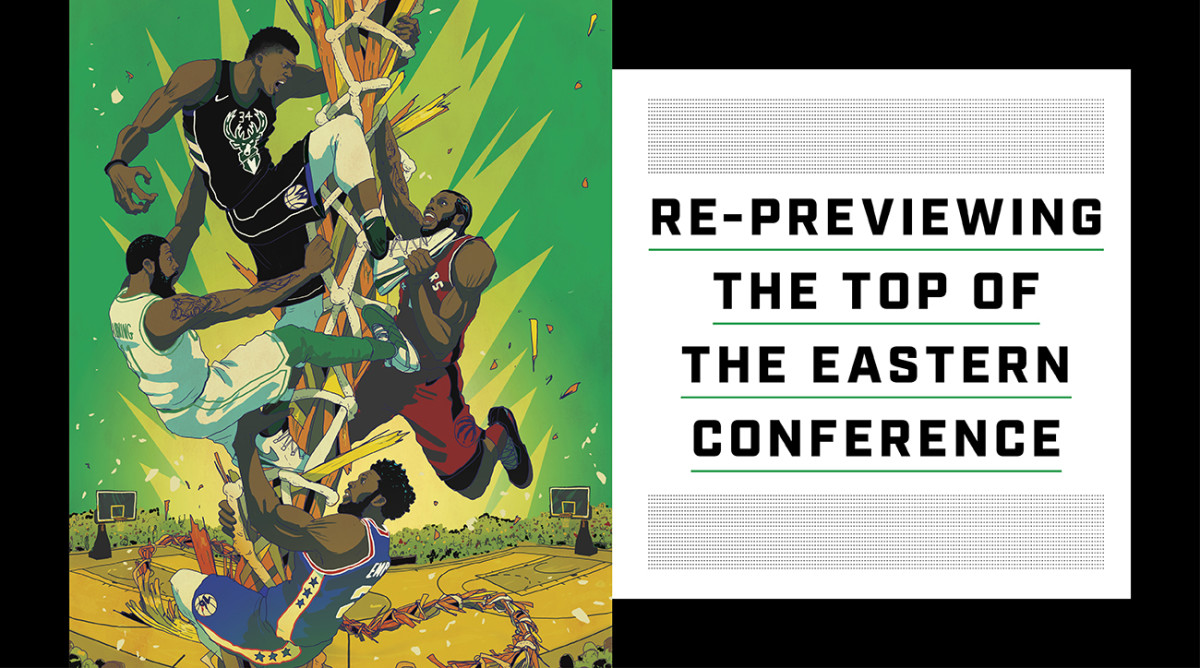
Opponents will have to completely rethink the Sixers, down to the nuts-and-bolts mechanics that make their steampunk offense work. We should too. Throw out the underwhelming point differential, the usual matchup counters, the old narratives. As the dynamics change within many of the East’s top teams, the dynamics among those franchises must as well. Boston can’t rely on its edge over Philly from previous encounters—including last spring’s second-round win—just as Milwaukee can’t draw too much from its 3–1 season series advantage over Toronto. The teams who shared that history are gone, swept away by the opportunity at hand.
What transpired at the deadline wasn’t so much a chain reaction as mutual recognition. The East is really, truly open for the first time in almost a decade, in part because LeBron James, whose teams won the conference every year since 2010, staked a claim out West. Everyone realizes what exactly that means, which explains much of their angst and—in the case of the three who made big moves—urgency. Forget the inevitability of the Warriors. To even appear in the Finals is an achievement. It is a confirmation of process, a resonant message. An organization can draw years of good favor from that kind of run, especially from its own free agents.
The Raptors, who in their 24-year history have never been to the Finals, would love nothing more than to begin their pitch to Leonard this summer with a trophy presentation and a shower of champagne. The Celtics’ postseason fate could either quiet the murmurs surrounding point guard Kyrie Irving’s future in Boston or serve to amplify them. Although cornerstones Simmons and Embiid are just in their early 20s, the Sixers accelerated their timeline when they acquired Butler in November. There will only be so many chances for Philly to take the conference while the 29-year-old is still in his prime (assuming, of course, that he re-signs this summer, when he is expected to opt out of his deal). Harris, himself, is proof—a trade acquisition from the Clippers that cost the Sixers four draft picks (two firsts and two seconds) even though he, too, can walk this summer. Proximity to the conference title makes it an acceptable risk.
Milwaukee’s position is particularly tenuous in a world where Anthony Davis is engineering his way out of New Orleans. Time can fly for any rebuilding, small-market team fortunate enough to draft a superstar; there is great pressure not only to win as a proof of concept, but also to invest in a younger supporting cast whose continued development gives reason for optimism. In the NBA, these ambitions are largely contradictory. The Pelicans for years found themselves caught between them, which led Davis to request a trade midway through his seventh season. Milwaukee’s MVP front-runner, Giannis Antetokounmpo, is currently in his sixth. Even the slightest parallels in their situations cannot help but trigger some anxiety in Milwaukee. Antetokounmpo is the Bucks’ inroad to lasting relevance. To lose that could set the franchise back decades.
This is the kind of possibility that looms, even when the franchise player in question hasn’t intimated any desire to leave. Keeping a superstar is restless business. It’s motivation enough for a team already atop the conference to gamble on Mirotic, another free-agent-to-be, for four second-rounders. This is a moment—not only for the Bucks, but for all of the East’s contenders. It’s the balance among them that puts the East up for grabs and the need for separation that now transforms their rivalries. The real season starts now. — Rob Mahoney
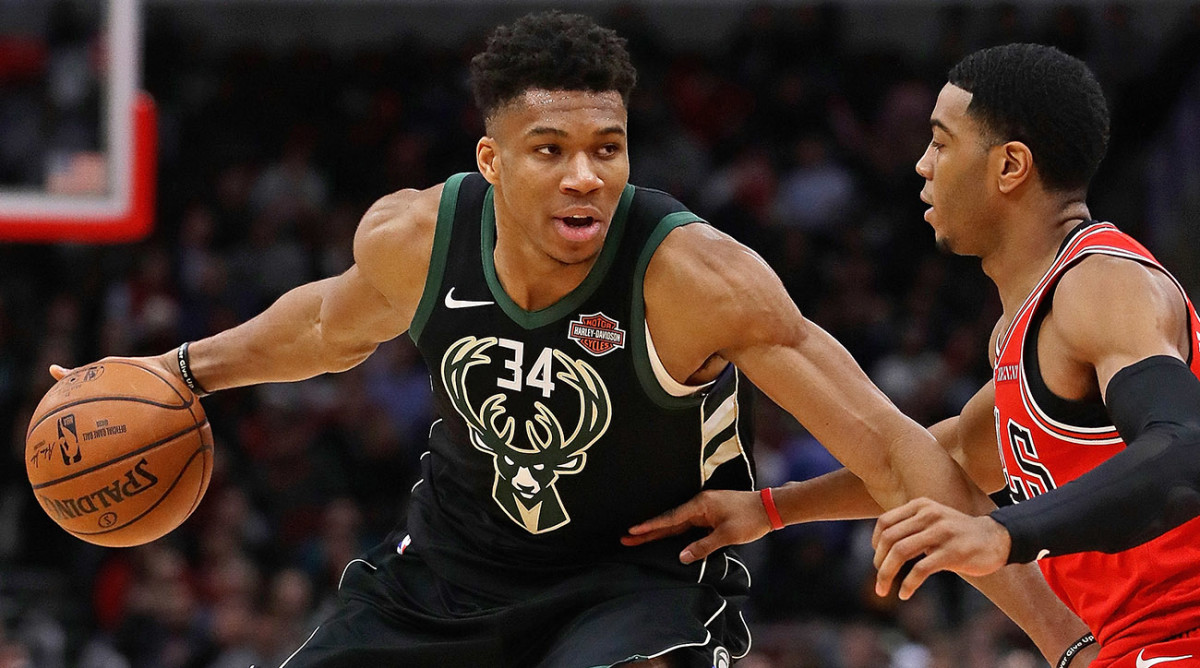
Milwaukee Bucks: Stretching the competition
Re-preview: The Bucks have, at no great cost, significantly improved their odds for postseason survival. Playoff basketball gets smaller as it goes deeper; lumbering centers are often the first to exit the floor, their size eclipsed by speed and skill. Enter Nikola Mirotic. Acquired from New Orleans in a three-team deal that cost Milwaukee four second-rounders and two marginal players, he’s a floor-stretching four with the strength to defend fives. There will come a time in April or May (or, Giannis willing, June) when teams will use extra shooters and off-ball screens to force 7-foot Brook Lopez out of the paint. It’s then that the 6'10" Mirotic will prove most valuable. The Bucks can rotate Antetokounmpo, Mirotic and forward D.J. Wilson (a pleasant surprise in a season of pleasant surprises) through its frontcourt as needed, sparing Lopez from being exposed.
No matter his position, Mirotic slots perfectly into Milwaukee’s free-form offense. Everything coach Mike Budenholzer runs is designed to ensure spacing, which provides a canvas for Antetokounmpo to be at his most artistic. Mirotic will stretch that canvas to the edges of the court. Like Lopez, he comfortably spots up well beyond the three-point line, converting an absurd 43.9% of his attempts beyond 28 feet, and he has the ninth most makes from that distance despite missing 27 games. Extending the D is a tactical priority for the Bucks, whose practice court features taped zones—some as far as the hash marks—designated for optimal spacing. Not only does Milwaukee have a coaching staff that will empower a shooter of Mirotic’s talents, but it also has skilled players who will take advantage of the space he supplies. — Rob Mahoney
Anonymous Scout: I can’t believe nobody’s come out and said [GM] Jon Horst should be Executive of the Year. They’ve added George Hill, they’ve added Nikola Mirotic and they haven’t subtracted anything. . . . The growth of Giannis Antetokounmpo’s game and body: A lot of that is a convergence of his talent and his character. He wants to tear your head off. He grew up tucked away in a corner in Athens, and he learned about fighting and being competitive. He doesn’t have any emotional attachment to anyone. He’s not playing against guys he’s seen 100 times in AAU. . . . Khris Middleton can shoot, play-make when he has to, and his defense is wildly underrated. . . . Having Mirotic is going to be huge because it allows their lineups to be so much more unpredictable. If you have predictability in the playoffs, you can be game-planned for.
They can use Mirotic and Ersan Ilyasova as the de facto bigs; they can go big with Brook Lopez, who can shoot it and is an underrated paint protector; they can play Antetokounmpo as a ballhandling five. They’re always going to be spaced out and have shooting. It’s going to be a pick-your-poison type thing. . . . Their defense has been awesome because they have such great switchability. The analytics back that up. People point to [coach] Mike Budenholzer’s failures [with the Hawks] in the playoffs, but he’s never had a player as good as the Greek Freak. They’ve got a combination of coaching creativity and lineup diversity to be really dynamic. They have a championship profile.
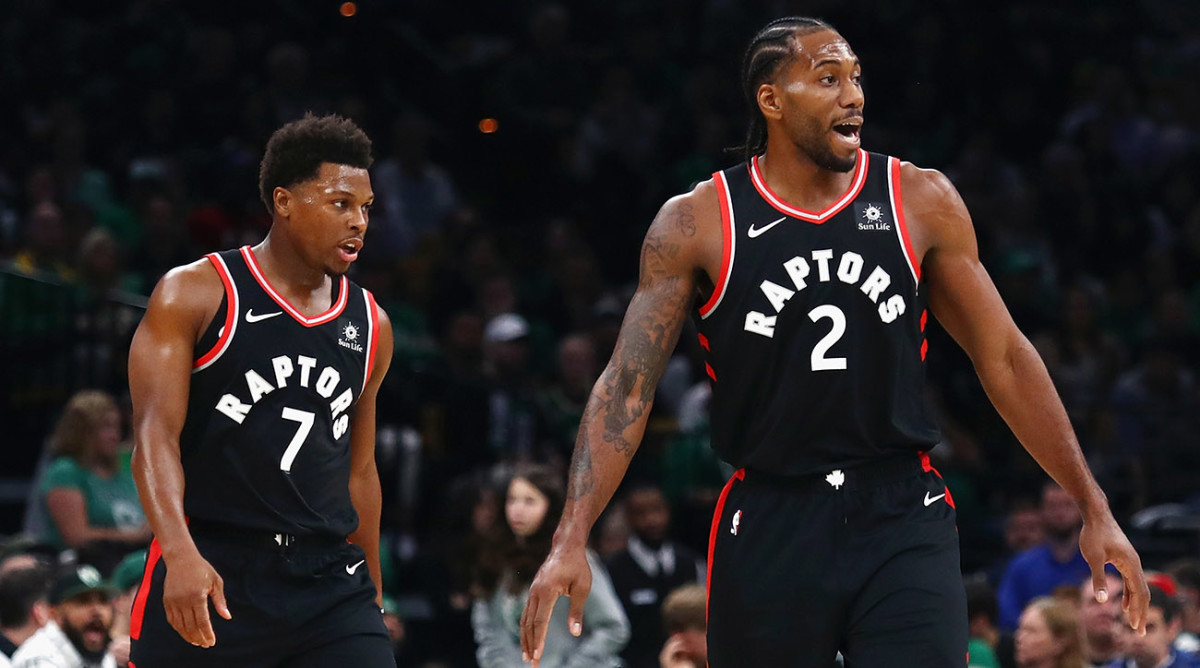
Toronto Raptors: A Big Lift—And A Big If
Re-preview: Marc Gasol can do a little bit of everything for Toronto. The 34-year-old import is a high-IQ center with a much wider skill set than Jonas Valančiūnas, who was the heart of the package shipped to Memphis. Gasol’s buttery touch makes him an effective passer as well as a shooter out to the three-point line, and he has sound instincts on the defensive end. At 7'1" and 255 pounds, Gasol isn’t the kind of big man you ask to switch late in the shot clock, but he can bang with Joel Embiid (and, if all goes well, Boogie Cousins) down low while keeping your offense humming.
Health could ultimately play a bigger role for the Raptors than any one acquisition. The starting five of Serge Ibaka, Kawhi Leonard, Pascal Siakam, Kyle Lowry and Danny Green have played in only 28 of the team’s 59 games through the All-Star break; they form the only five-man unit on the team to even appear together in 20 games. Having so many players in and out of the lineup, even for a team with so much flexibility, makes it difficult to develop chemistry. If Lowry (who has missed 12 games), Leonard (out for 16), Gasol and the rest are fully healthy come the postseason, Toronto will have the depth, flexibility and versatility to match multiple styles of play.
Ultimately, Gasol bolsters what the Raptors already do best: fill the floor with two-way players who can counter any move. He gives their Finals aspirations a big lift—as long as everyone can stay on the court. — Rohan Nadkarni
Anonymous Scout:Adding Marc Gasol reminds me of when Cleveland went and got Shaq to help guard Dwight Howard. They’re all in, so they got Gasol to guard Joel Embiid. If you go back to his games with the Grizzlies, Gasol made Embiid work. Gasol makes them better because in the playoffs it tends to become a half-court game, and he’s just such a good fundamental player. There was a staleness that had set in with Memphis, so this should reenergize him. . . . If anyone expected this [improvement] from Pascal Siakam, he would have gone a lot higher [than No. 27 in the 2016 draft]. It’s just going to be whether he makes the open threes in the playoffs, because he’s going to get them. He can score inside, his energy is great, and if he makes shots, he makes them so hard to guard.
NBA Power Rankings: Where Do All 30 Teams Stand Post All-Star?
I don’t really sweat rotating their bigs, because they’ll be able to play two together, or they can play Kawhi Leonard at the four with one of them at the five. Siakam can play the four or defend the three, so there’s enough variability in their skill sets where they can integrate them. I wouldn’t put it past them to experiment with smaller lineups in the playoffs, with Siakam and Kawhi. They don’t have as much variance as some of the other teams in the East. . . . The knock on Kyle Lowryis always whether he can show up in the playoffs and if his body can hold up. He went through a couple of weird phases this season, but when he has it going, he can still shoot and pass, and he plays hard. . . . You can make the argument that Kawhi is the trump card in the East because he’s the best player in any series.
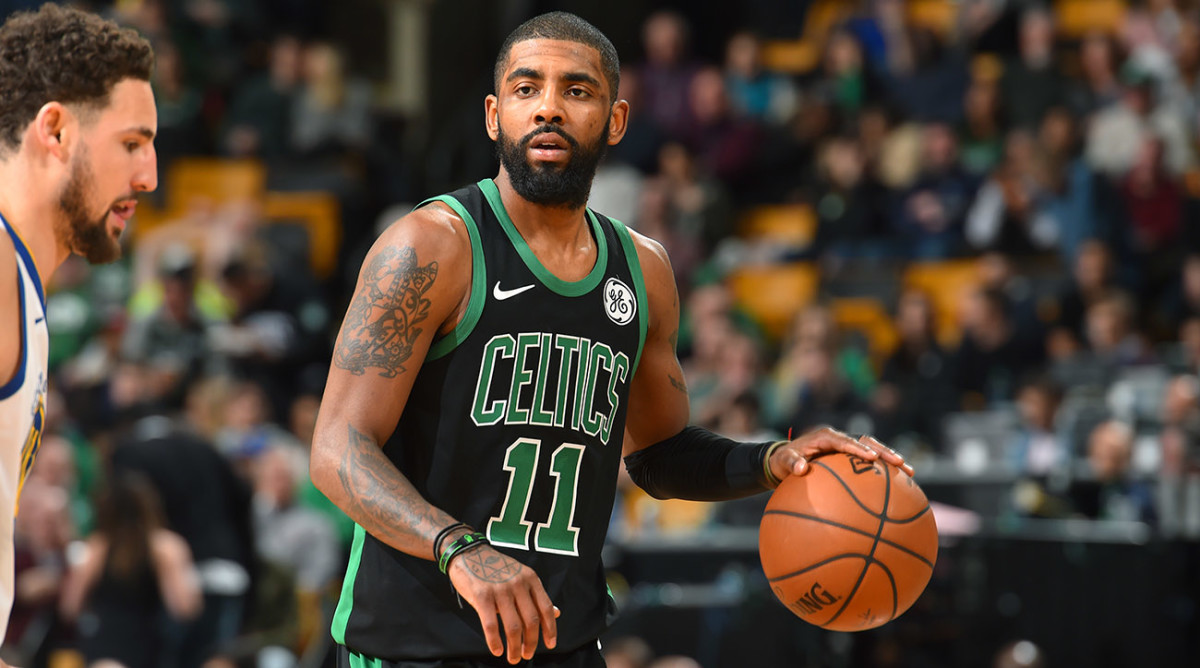
Boston Celtics: The East's Biggest Wild Card
Re-preview: There are games—back-to-back wins over Philadelphia and Detroit before the All-Star break—in which the Celtics look like the preseason favorites, with a top five defense handcuffing elite scorers and a roster steeped in talent producing on the offensive end. There are other games—like in consecutive losses to the Lakers and the Clippers earlier this month—in which Boston has played like a disconnected bunch of hero ballers who don’t seem to like playing together.
Kyrie Irving has shone statistically, but he’s struggled in a leadership role, and his pending free agency has been a distraction. Jayson Tatum’s scoring is up, but his shooting percentages have dipped. Jaylen Brown’s, too. Terry Rozier, a breakout star last postseason, has had a bumpy reentry into a backup role.
The wild card: Gordon Hayward, who, after a predictably slow start coming back from the grotesque ankle injury that cost him all but five minutes of last season, is slowly rounding into form. In February, he’s connected on 57.1% of his shots and 52.4% of his threes, while cracking double figures in five of the Celtics seven games before the break.
A productive Hayward coupled with the impending return of defensive anchor Aron Baynes make tipping the Celtics to go on a deep postseason run a believable prediction. But with this enigmatic bunch, just about every prediction of how Boston’s season will end is believable. — Chris Mannix
Anonymous Scout: This team can win the East or get beat in the first round. They have great talent but sometimes they have no chemistry. . . . Kyrie Irving is having one of his best seasons, maybe his best. He’s the same pure scorer and one of the best fourth-quarter closers in the league. But when he gets it going, there is a tendency for everyone to watch him. When they make four or five passes, they are tough to guard. . . . They have been a really good defensive team for the last two years. They can switch as well as any team in the league. They have versatile bigs, big guards and they are physical. . . . Gordon Hayward just isn’t right. He doesn’t look hurt, but the explosion and the sharp cuts that were there in Utah just aren’t there now. [Coach] Brad Stevens did the right thing moving him to the bench. It takes some of the pressure off. And he’s an effective scorer with the second-unit guys.
Marcus Morris has been a godsend. He’s been consistent, he’s tough, he’s fearless, he defends and he makes big shots. . . . I love Marcus Smart. He’s a top three perimeter defender. Stevens trusts him. The key is his shooting. He’s been much better this year, but teams will still give him a shot if it means helping on Kyrie or Jayson Tatum. He’s going to get a lot of open looks in the playoffs. . . . Tatum has not taken the kind of step forward I expected. Some of that is having to share the ball more. But he doesn’t take advantage of his size. He takes a lot of midrange jump shots when he should be driving and using that length to score over people. He settles too much.
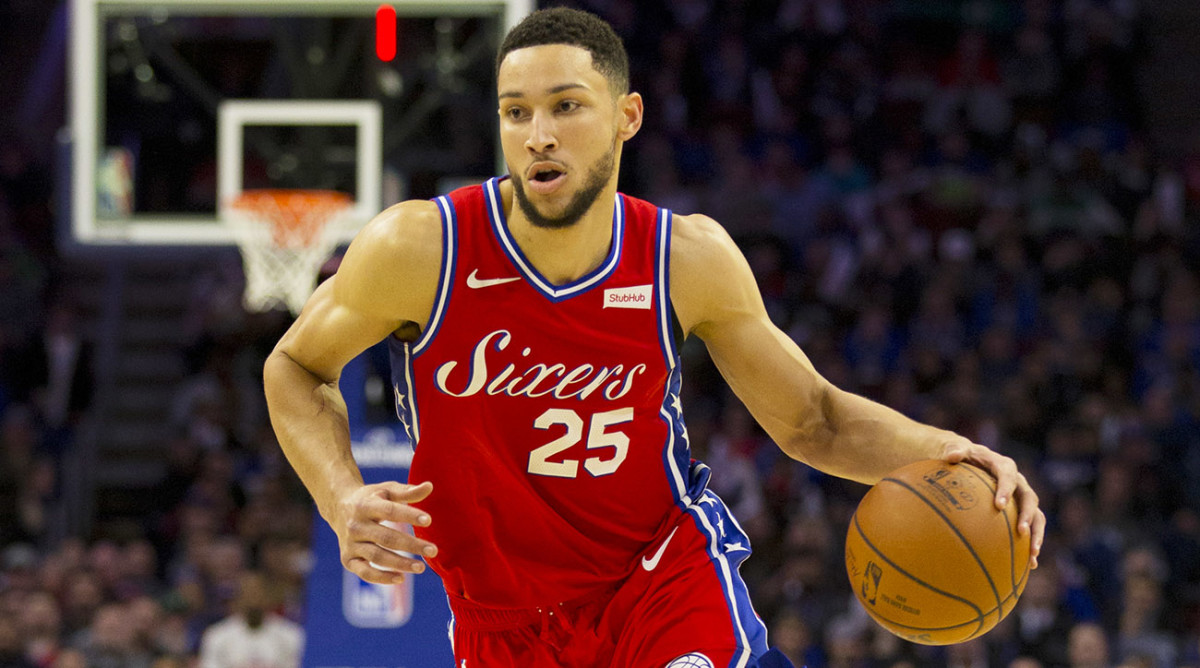
Philadelphia 76ers: Talented Contender or Expensive Challenger?
Re-preview: The 76ers have been many things over the past few years—embarrassing (to the NBA), adored (by a cult following), snakebitten (Joel Embiid’s myriad injuries), fortunate (Embiid’s recovery), depressing (Markelle Fultz’s jumper), thrilling (last year’s playoff run) and completely bizarre (former GM Bryan Colangelo’s Twitter scandal)—but they have never been boring. That trend continued when Philadelphia made a large bet on this season by acquiring Jimmy Butler in November; acquiring Tobias Harris from the Clippers was a double down.
What’s good: Send help against Embiid or Ben Simmons in the post, and Harris (43.0% from three-point range) or J.J. Redick (39.5%) will be waiting for a kick-out. Butler’s isolation skills can help them close games, and with five starters capable of creating a shot, the Sixers are going to feast on mismatches in transition.
What’s concerning: Harris and Redick may struggle on defense, and unless GM Elton Brand can find an elite point-guard defender on the buyout market, Butler will have to spend a lot of time chasing Kyrie Irving and Kyle Lowry. With five skilled scorers, there are going to be ongoing questions about shot distribution.
So did Philly just build the most talented team in the East—or a very expensive runner-up? Whatever the answer, the experiment seems an appropriate extension of the Process. You don’t have to love every move, but you can’t help but admire the ambition. — Andrew Sharp
Anonymous Scout: The thingthey have going for them is that J.J. Redick, Ben Simmons and Joel Embiid have such a good familiarity with one another. Introducing their new pieces into an intricate system late in the season can be difficult, so they might simplify some stuff. But they’re no joke, man. They’re deep. . . . I think Tobias Harris was a hedge against possibly losing Jimmy Butler, but they have a dynamic lineup now where they can play multiple styles. Tobias needs to massage the ball a little, and he’s done an admirable job getting that out of his game and being more decisive. But in times of stress—human nature, there’s a tendency to revert to what’s familiar. Butler is the same way. [Coach] Brett Brown wants movement and cutting. For Tobias and Jimmy, those aren’t their strengths.
Redick is continually getting better as he gets older—that’s a remarkable story. The freedom-of-movement rules and the increased importance of shooting have helped, but the way he impacts the game even when he’s not getting the ball, with his cutting and spacing, it’s invaluable. . . . Boban Marjanovic can play a role against an Aron Baynes [of Boston], a Marc Gasol [of the Raptors]—he can protect Embiid a little bit. You can only play Marjanovic in short spans because of his defensive deficiencies, but he can give you four minutes, get eight rebounds, make three great passes. He was a little bit underrated in that deal [for Harris] because of who they might have to face in the playoffs.
